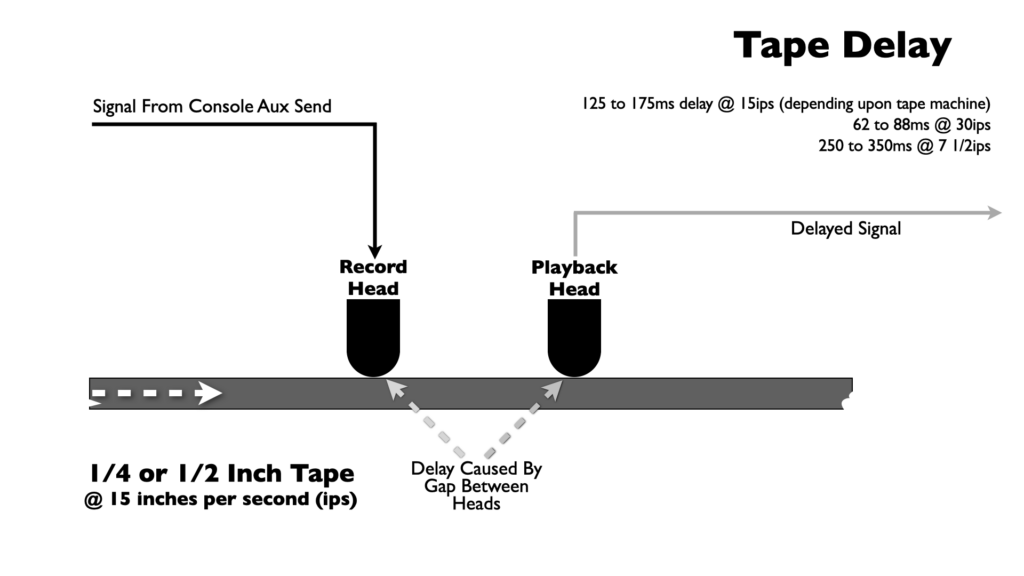- in Book Excerpt by Bobby Owsinski
- |
- 3 comments
An Inside Look At How Tape Delay Works
Many delay plugins today are either trying to directly emulate tape delay or have a tape delay setting. Setting up a tape delay used to be one of the first things you learned how to do when you started in the studio back in the analog days, since there was no other way to accomplish the task (this was before outboard digital delays came into widespread use).

On a typical mix, there may be several delay machines set up – one for a fast 15 ips delay, a second for a slower 7 1/2 ips delay, maybe even one at an even longer 3 3/4 ips delay, and usually another one for predelay to a reverb chamber or plate. The big problem for the assistant was keeping track of how much tape was available on each machine so you didn’t run out during a mix and suddenly lose your effect.
Today very few studios have a tape machine, so most engineers, producers and musicians don’t really know how the real things works. Here’s a short excerpt and diagram from my just released Mixing Engineer’s Handbook 5th edition that describes tape echo.
“Back in the analog days delay was accomplished by using an outboard tape machine. The delay occurred because the playback head was located after the record head, which created a time delay (see the figure above). As the speed of the tape machine was changed, so would the delay.
For example, a 15 ips (inches per second) tape speed would result in a delay somewhere in the 125 to 175 milliseconds range (it would be different with different models of tape machines because the gap between the heads was different for each), while it would be double that, or around 250 to 350 milliseconds at 7 1/2 ips.
Because of the analog nature of magnetic tape, it has the characteristics of wow and flutter of the tape path, plus a rolled-off high frequency response and increased distortion with each repeat, which most tape delay plugins try to emulate.”
For years, hardware digital delays and then digital plugins sounded too clean for those raised on pure tape delay, but many of today’s plugins do a great job emulating the distortion, wow and flutter and rolled off response to now give you something close to the real thing.
You can read more from The Mixing Engineer’s Handbook and my other books on the excerpt section of bobbyowsinski.com.

